Diamond Grading Guide: Evaluate the Best Diamond Quality
How do you know the true quality of a diamond? Diamond grading helps you evaluate a diamond’s worth based on key factors like cut, color, clarity, and carat weight. This guide will explain how these elements determine a diamond’s value, helping you make informed buying decisions.
Key Takeaways
-
Diamond grading relies on the 4Cs: cut, color, clarity, and carat weight, which are essential for assessing a diamond’s quality and market value.
-
GIA certification provides an unbiased evaluation of diamonds, enhancing buyer trust and ensuring consistent quality assessments.
-
Understanding the differences between natural and lab-created diamonds, including their origin and grading, helps buyers make informed decisions tailored to their preferences and budget.
Understanding Diamond Grading
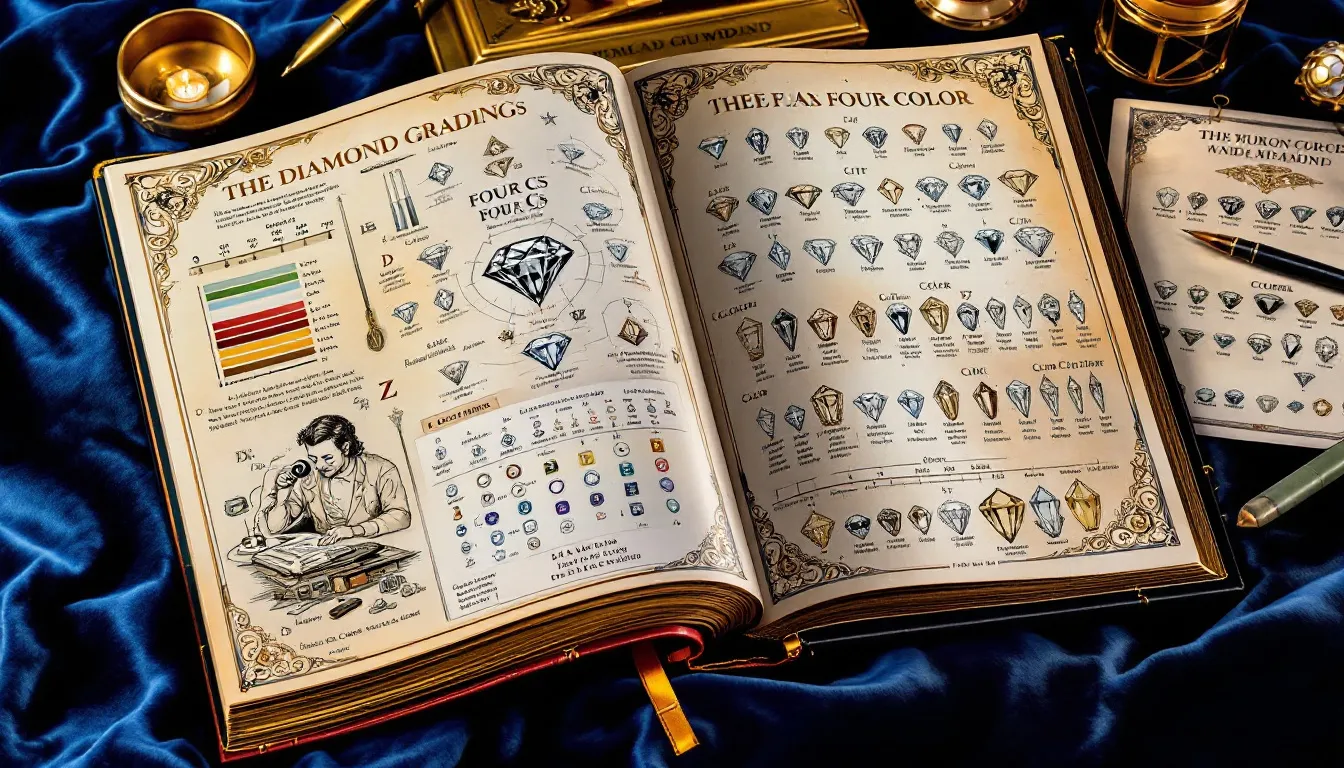
Diamond grading is a meticulous method used to evaluate the various attributes of a diamond. This process helps determine a diamond’s quality, which in turn influences its market value. Diamond buyers benefit greatly from understanding the intricacies of diamond grading, as it leads to informed purchasing decisions.
The key to diamond grading lies in recognizing the importance of each evaluated attribute. These elements enable buyers to compare diamonds effectively and select one that best fits their needs and budget. Most diamonds undergo a rigorous evaluation to ensure their worth, and being familiar with this process will empower you to make a smart investment.
The 4Cs of Diamond Quality
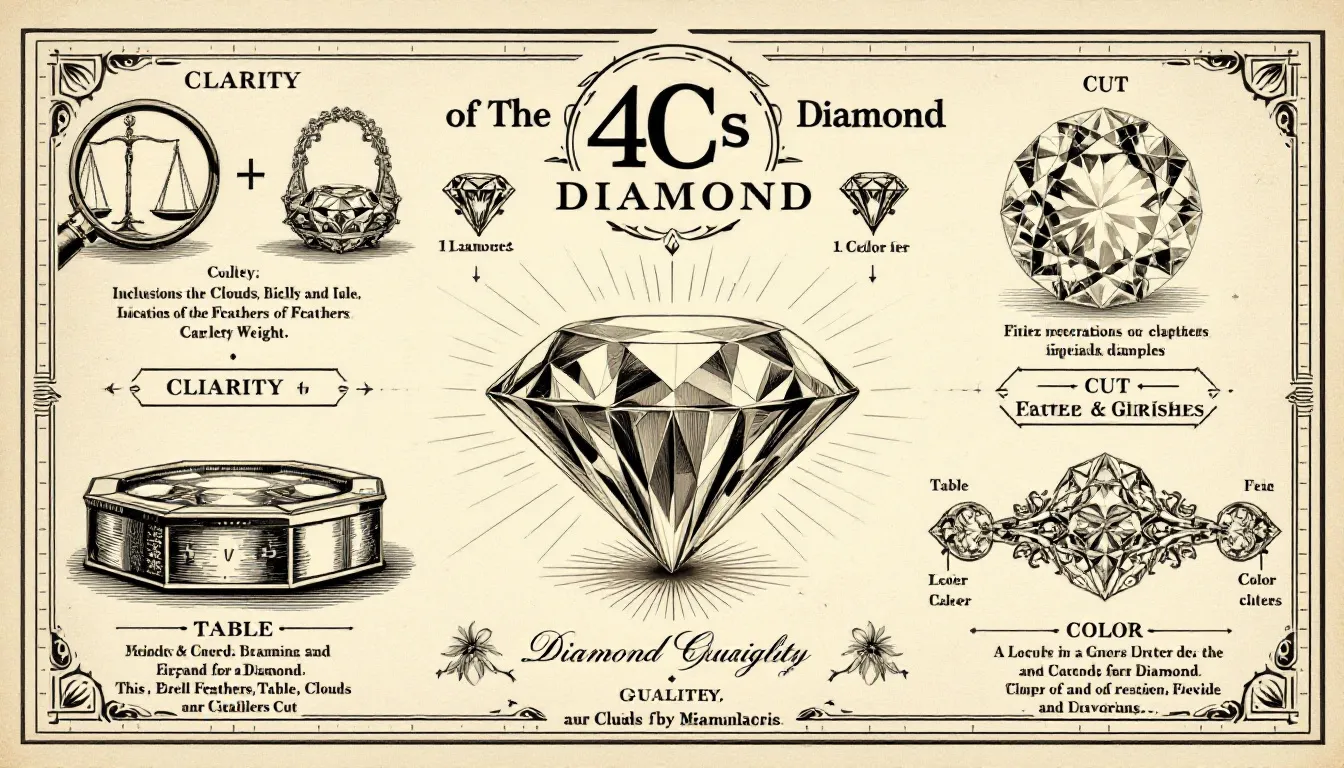
Diamonds are evaluated based on the 4Cs: cut, color, clarity, and carat weight. These four criteria collectively determine a diamond’s quality and market value. Each of these factors plays a crucial role in assessing the overall attractiveness and worth of a diamond.
Diamond buyers must grasp the 4Cs to make informed decisions. The cut refers to how well the diamond has been shaped and faceted, affecting its brilliance. Color grades the absence of color in a diamond, with less color indicating higher value. Clarity measures the presence of flaws or inclusions, and carat weight quantifies the diamond’s size.
Let’s delve deeper into each of these components.
Cut Grade
The cut of a diamond is perhaps the most critical factor in determining its brilliance and sparkle. A well-cut diamond will reflect light beautifully, enhancing its overall appearance. This aspect of diamond grading is so vital that even minor differences in the cut can significantly affect the diamond’s visual appeal and value.
The GIA cut grading scale ranges from Ideal to Poor, offering a clear measure of a diamond’s cut quality. An ideal or excellent cut maximizes the diamond’s light performance, making clarity and color flaws less noticeable. Therefore, focusing on a high cut grade can often outweigh slight imperfections in other areas.
Color Grade
The color grade of a diamond ranges from D (colorless) to Z (yellow or brown). The less color in a diamond, the higher its value, as colorless diamonds are rarer and more sought after. Evaluating a diamond’s color involves comparing it against a standardized diamond color scale under controlled lighting conditions.
For most diamonds, subtle differences in color may not be noticeable to the untrained eye, but they can significantly impact the diamond’s price and appeal. When purchasing a diamond, it’s essential to understand where it falls on the color scale to ensure you’re paying a fair price for its color grade.
Clarity Grade
Clarity grading assesses the presence of internal and external flaws in a diamond. Inclusions (internal flaws) and blemishes (external flaws) can affect the diamond’s overall appearance and value. The GIA clarity grade scale and gia clarity scale range from Flawless (FL) to Included (I3), with several intermediate grades such as Very Very Slightly Included (VVS1) and Slightly Included (SI2).
A diamond’s clarity grade is determined by factors such as the size, nature, position, color, and quantity of its clarity characteristics. A diamond clarity Flawless diamond, which shows no defects under 10x magnification, is exceedingly rare and highly prized.
Carat Weight
Carat weight measures a diamond’s size, with one carat equating to 200 milligrams. As the carat weight increases, so does the diamond’s weight and value, making larger diamonds more desirable and expensive. Each carat is further divided into 100 points, allowing for precise weight measurement.
Buyers should grasp the importance of carat weight, as it directly influences the diamond’s size and price. However, it’s important to balance carat weight with other quality factors like cut, color, and clarity to ensure you’re getting a well-rounded diamond.
How GIA Grading Works
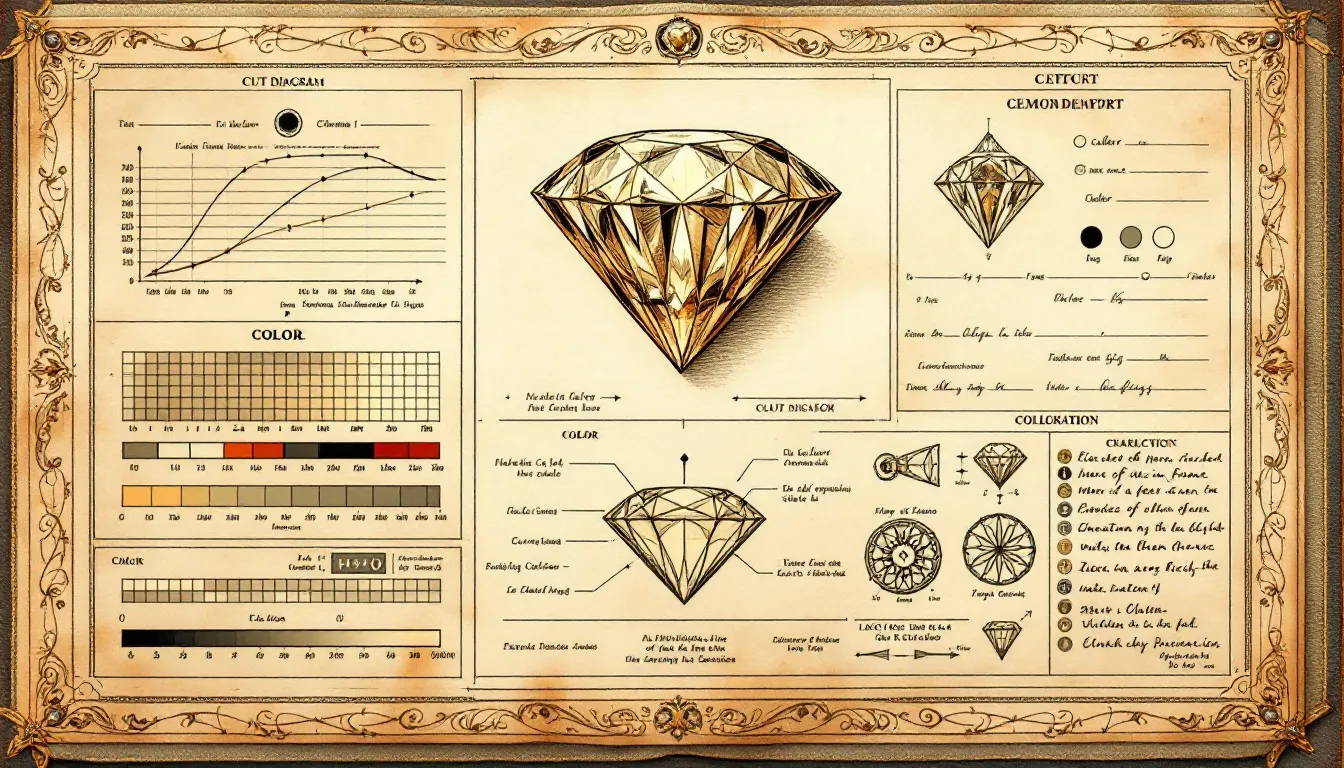
The Gemological Institute of America (GIA) has been the leading authority in diamond grading for nearly a century, providing unbiased evaluations. The GIA’s standards for grading diamonds, particularly the 4Cs, are widely adopted and respected in the industry.
GIA gemologists use a comprehensive and standardized system to assess diamond quality. Different types of GIA reports, such as the Diamond Grading Report and the Diamond Origin Report, offer detailed insights into a diamond’s characteristics, including the gia report number. This standardized approach ensures that diamonds are evaluated consistently, making it easier for buyers to trust the quality assessments.
GIA Reports
A GIA diamond grading report offers a thorough evaluation of a diamond’s quality. This assessment is based on the 4Cs. These reports include unique identifiers and specific measurements that help confirm the diamond’s characteristics. The report covers aspects like polish, symmetry, and fluorescence, which are crucial for the overall quality.
The GIA grading report not only assesses a diamond’s cut, color, clarity, and carat weight but also documents any treatments the diamond has undergone. Such a comprehensive evaluation provides buyers with a clear understanding of the diamond’s quality, aiding in informed purchasing decisions.
Importance of GIA Certification
GIA certification is vital as it ensures an independent and unbiased evaluation of a diamond’s quality. This certification enhances trust among buyers, knowing that the diamond has been assessed by a globally recognized authority.
A GIA-certified diamond can boost its market value and assure buyers of its authenticity and quality. The certification process is rigorous, focusing on the 4Cs to provide a reliable measure of the diamond’s worth.
Practical Tips for Evaluating Diamonds
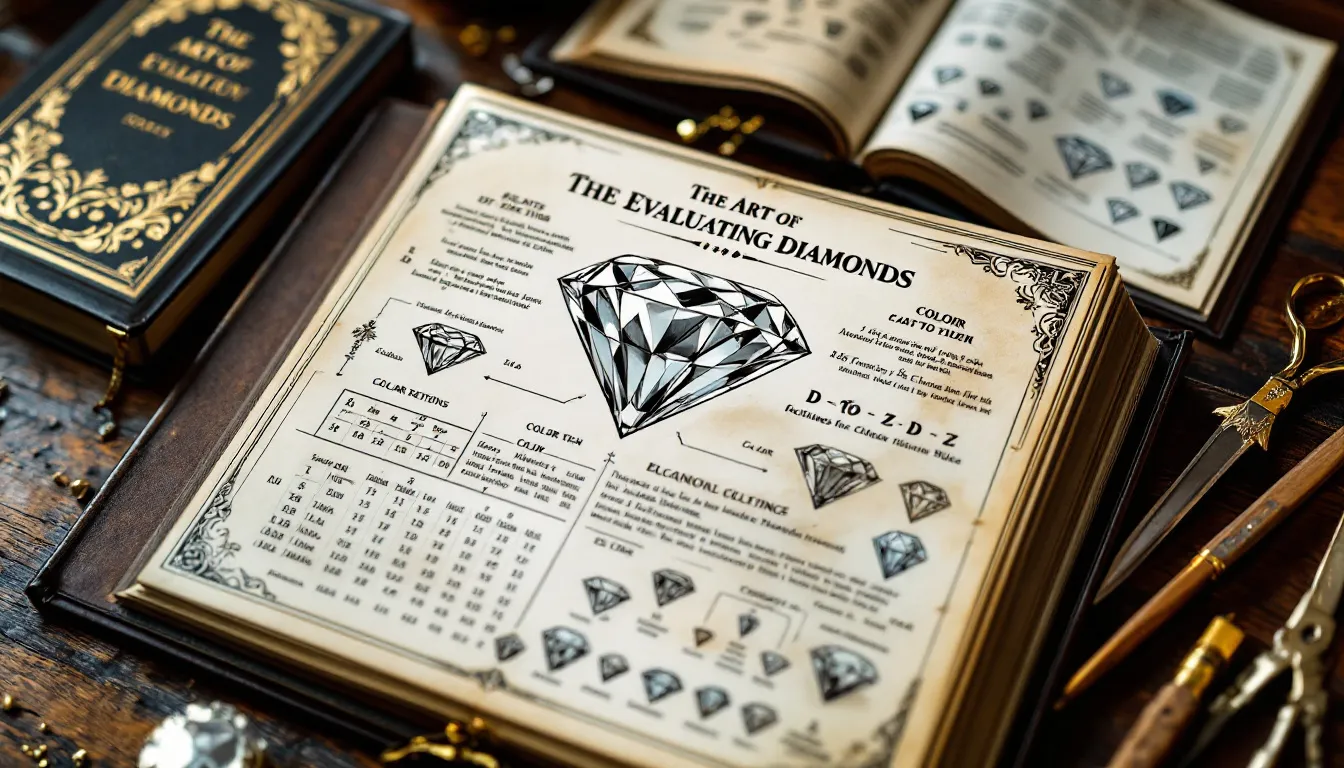
When it comes to evaluating diamonds, setting a budget is the first critical step, as diamonds can be surprisingly expensive. A gemologist can enhance your purchasing confidence by verifying the authenticity and value of the diamonds you’re considering.
Being knowledgeable about diamond grading enables confident and informed choices. Understanding the 4Cs and how to interpret GIA reports will arm you with the necessary tools to evaluate diamonds effectively.
What to Look for in a GIA Report
A GIA report is an essential document that proves a diamond’s quality and documents its unique characteristics, which is crucial for resale purposes. The report includes detailed assessments of the diamond’s cut, color, clarity, and carat weight, following strict evaluation protocols.
By understanding the grading scales for color and clarity in the GIA report, buyers can avoid overpaying for features that are not easily distinguishable to the naked eye. This knowledge helps in making informed decisions about the diamond’s true value and quality.
Evaluating Diamond's Quality with the Naked Eye
Evaluating a diamond’s quality with the naked eye involves looking for any visible inclusions or blemishes under good lighting conditions. A diamond evaluation includes checking for an eye-clean diamond, which appears free of inclusions without magnification, and is often preferred.
Inspecting the diamond’s color can also be done without tools by comparing it to a known color scale under natural light. The clarity and color of a diamond significantly influence its overall quality and should be carefully examined.
Comparing Natural Diamonds and Lab-Created Diamonds

Natural diamonds and lab-created diamonds are chemically and physically identical, offering similar visual qualities. However, lab-created diamonds are generally less expensive and produced in a matter of weeks, whereas natural diamonds form over billions of years.
While natural diamonds tend to have a higher resale value due to their rarity, lab-created diamonds are gaining popularity for their ethical sourcing and sustainability. Knowing these differences helps buyers make more informed decisions.
Grading Differences
Both natural and lab-created diamonds are graded using the same criteria, known as the 4Cs: cut, color, clarity, and carat weight. This standardized grading ensures that the quality of lab-created diamonds is evaluated just as rigorously as natural diamonds.
Despite the identical grading standards, lab-created diamonds typically cost significantly less than their natural counterparts, affecting their market value. Understanding these grading differences helps buyers make informed choices about the type of diamond they prefer.
Value Considerations
The origin of a diamond, whether natural or lab-created, significantly influences its market value. Natural diamonds are generally valued higher due to their perceived rarity and historical significance.
Buyers should consider the origin of diamonds as it impacts resale value and market demand. This consideration is essential for making a sound investment in either natural or lab-created diamonds.
Speaking with a Diamond Expert
Consulting a GIA gemologist can provide personalized insights tailored to your specific jewelry needs. These experts can offer valuable advice on diamond grading, helping you understand the nuances of each diamond’s quality.
Regular consultations with a gemologist help maintain your diamonds’ quality and longevity through expert care and maintenance advice. This professional guidance ensures that you make well-informed decisions and keep your diamonds in top condition.
Summary
Understanding diamond grading is essential for making informed purchasing decisions. By familiarizing yourself with the 4Cs—cut, color, clarity, and carat weight—you can evaluate diamonds effectively and choose one that meets your needs and budget.
GIA certification provides an unbiased assessment of diamond quality, enhancing trust among buyers. Whether you opt for a natural or lab-created diamond, consulting with a diamond expert can offer personalized insights and ensure you make a well-informed investment. Remember, the journey to finding the perfect diamond is as valuable as the gem itself.
Frequently Asked Questions
What are the 4Cs of diamond quality?
The 4Cs of diamond quality are cut, color, clarity, and carat weight, which together significantly influence a diamond's overall value. Understanding these criteria is essential for making an informed purchase.
Why is GIA certification important?
GIA certification is essential as it provides an independent and unbiased assessment of a diamond's quality, fostering trust among buyers and enhancing the diamond’s market value.
How can I evaluate a diamond's quality with the naked eye?
You can evaluate a diamond's quality by examining it under good lighting for any visible inclusions or blemishes, and by comparing its color to a known color scale in natural light. This method provides a clear assessment of the diamond's overall appearance and quality.
What is the difference between natural and lab-created diamonds?
Natural diamonds are formed over billions of years through geological processes, whereas lab-created diamonds are synthesized in weeks using advanced technology. While both are chemically identical, they differ in cost and resale value.
What should I look for in a GIA report?
When evaluating a GIA report, prioritize the assessments of the diamond's cut, color, clarity, and carat weight, as these are crucial indicators of its quality. A thorough understanding of these attributes will help you make an informed purchase decision.
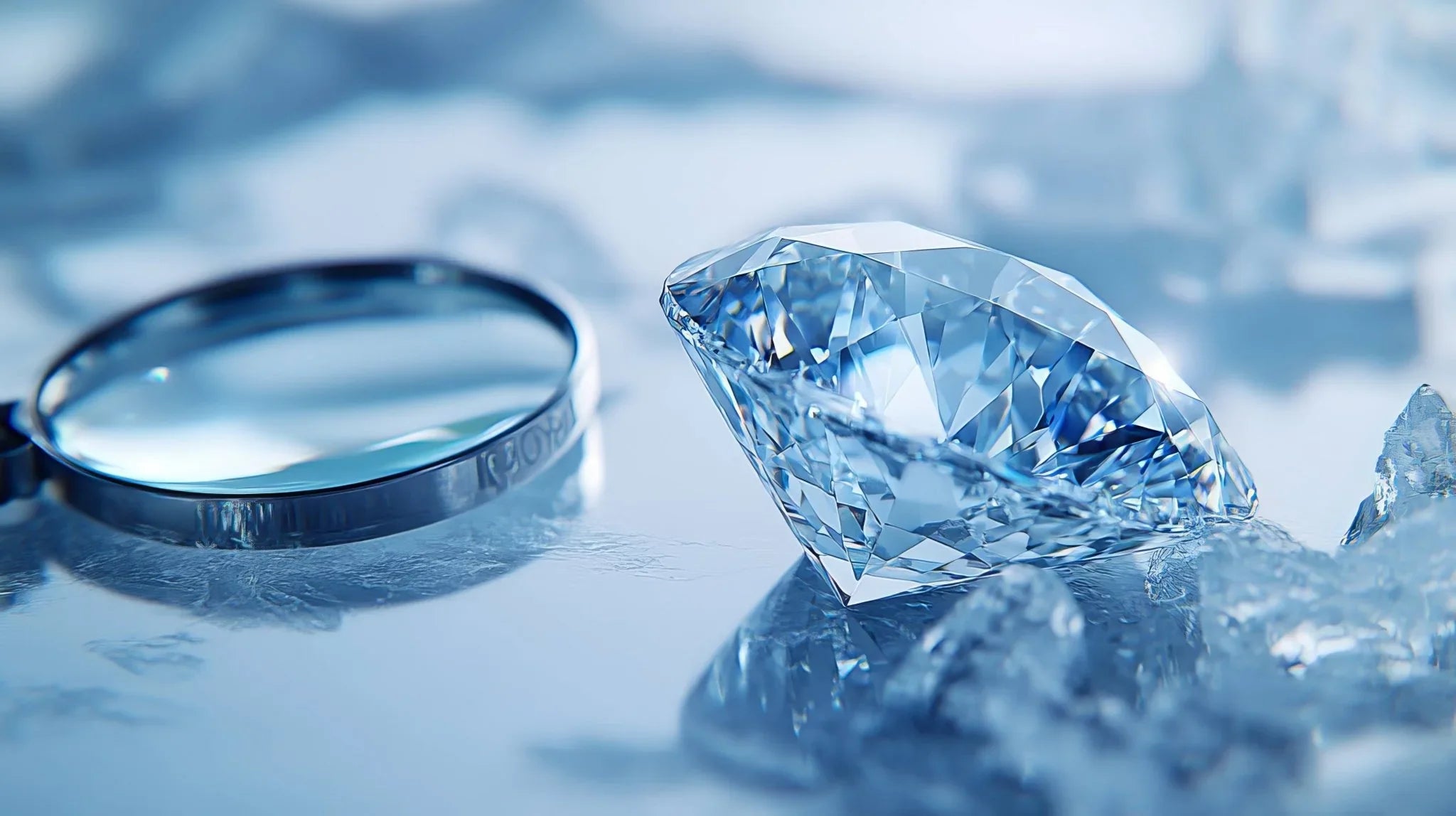
Leave a comment